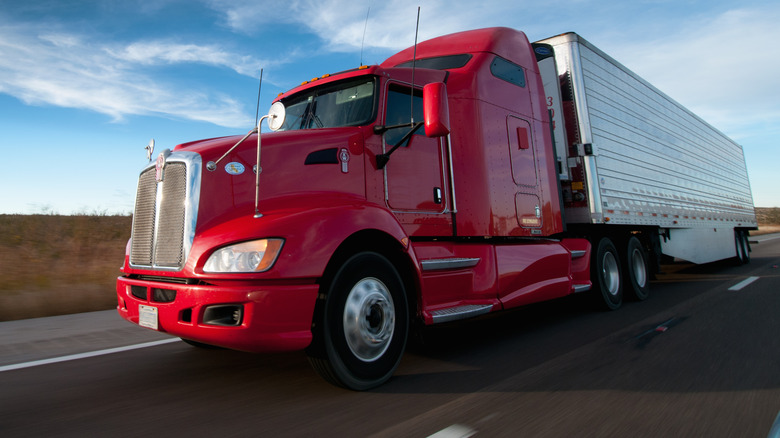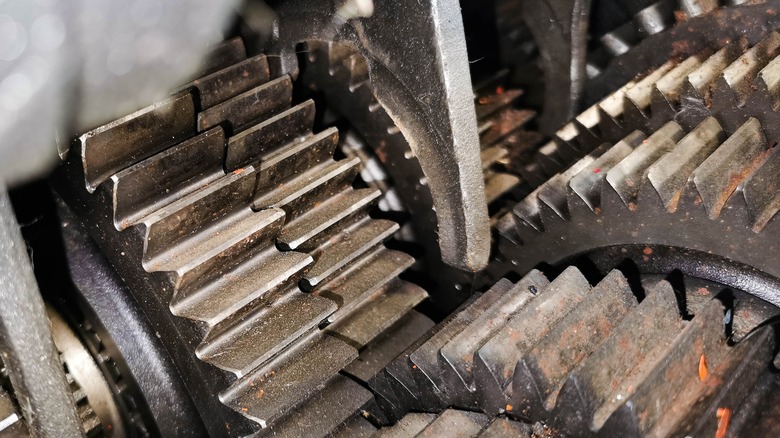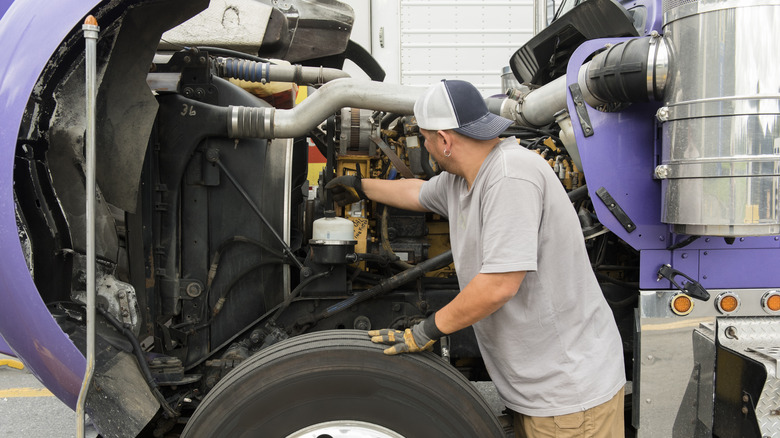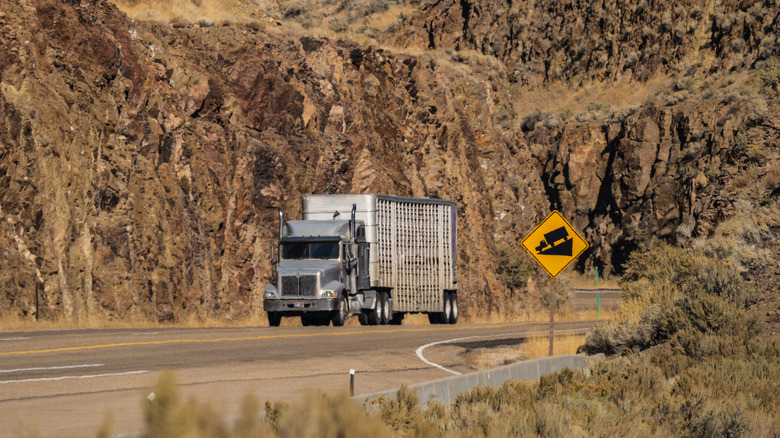Why Do Semi-Trucks Have So Many Gears?
Big rigs, or 18-wheelers, are designed around hauling heavy loads, and these massive machines move around 70% of the freight in the U.S. One of the major differences in a semi-truck transmission is the number of gears available. The average car comes with around five or six gears, while a semi can have as many as 18 (with the exception of Tesla's electric semi-truck, which only has one). A big rig needs more gears than other vehicles for a few reasons, such as enhanced torque, reduced strain on the engine, and greater adaptability on steep roads.
On average, a semi-truck and fully loaded trailer weighs around 50,000 pounds. In order to pull such a heavy load, a big rig engine must produce a significant amount of torque, which is a figure representing the twisting strength an engine is capable of exerting. Horsepower and torque are different, with semi-truck gearing designed to generate more torque capability for essential pulling power.
How more gears make additional torque
An 18-wheeler comes equipped with more gears because of the relationship torque has with speed. The faster you travel, the lower the amount of torque generated. So, since an engine's twisting force is greatest at low speeds, adding extra gears enables the engine to stay in the ideal power band of around 1,250 to 1,350 RPM.
Staying within this RPM range by shifting into the extra gears makes a semi-truck more efficient. If you intentionally ran a big rig outside of its optimum power band, you would use more horsepower than torque to pull the load, resulting in increased fuel usage.
But why do the lower gears generate more torque? Essentially, gears are a series of levers that act upon each other, determining the rotational speed of the wheels versus the engine's RPM. A lower gear multiplies the engine's RPM, enabling the drive shaft to turn numerous times for every single wheel revolution.
More gears mean less strain on the engine
When you reach the upper limit of a gear, the engine's RPM will rev much higher, causing the engine to work harder. It's for this reason that many automatic cars have overdrive, which reduces the demand on the engine once you reach cruising speed. With more gears, a semi-truck can remain in its optimal RPM range even when reaching highway speeds.
Not only do additional gears help reduce how hard the engine must work, but they also have a positive effect on longevity. While failure points are an evitable factor when running an engine, if you can keep RPMs lower, you prevent more severe deterioration over time. According to Freightliner.com, a single day in the mechanic's shop can run drivers anywhere from $300 to $1,000 in lost revenue. So, an owner-operator or fleet needs to keep their trucks on the road with as few interruptions as possible, and reducing engine strain is critical.
Hills are more manageable
Imagine cruising west on I-70 through the Colorado Rockies, where it's not uncommon to see inclines and declines reaching 6%. In a car, this type of hilly terrain isn't particularly problematic, and using your brakes to slow your descent can help control your speed. A big rig, on the other hand, can't rely on the brake pedal in this situation, as the weight of the load in the trailer puts the driver at risk of burning out their brakes. This is why you may notice something called a runaway truck ramp in places where the road experiences a dramatic change in elevation. Even in normal conditions, if a typical semi-truck starts applying the brake at 60 mph, it can take up to 200 feet to fully stop.
With more gears, a semi-truck can better manage going uphill by remaining in the optimum power range, as well as help control speed when going downhill. Rather than place immense pressure on the brake system when going down a steep grade, an 18-wheeler can incrementally downshift, helping to slow momentum without putting undue stress on the engine.



